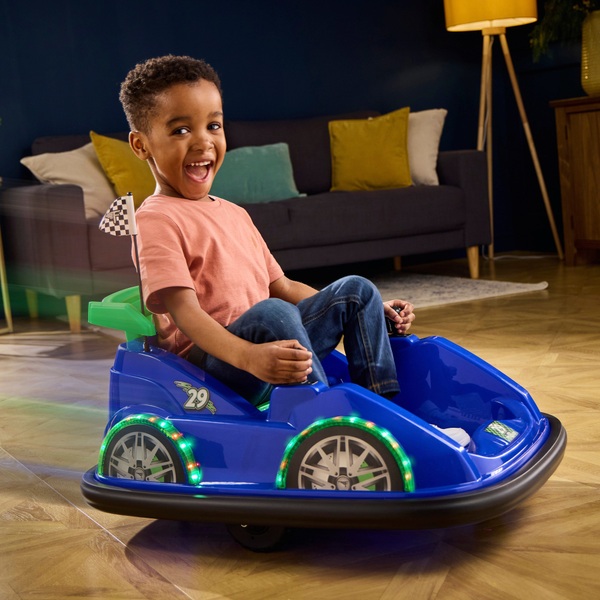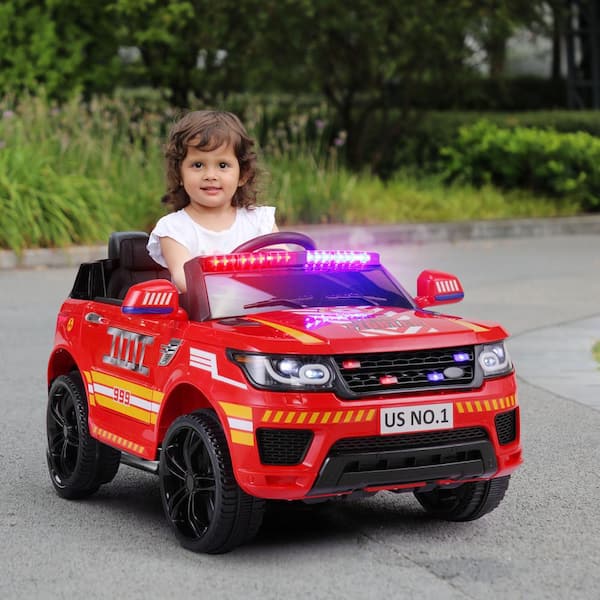Great Facts On Deciding On Kids Cars
Great Facts On Deciding On Kids Cars
Blog Article
What Should I Be Aware Of About The Battery's Life And Charging Times Of An Electric Kids Ride-On Car?
Knowing the battery type and charging time of an electric kids' ride-on vehicle is crucial to ensure optimal performance and uninterrupted playtime. This is all you need to know about battery type.
Most electric cars for children can be recharged, and usually make use of lithium-ion or lead-acid battery. Lithium-ion batteries typically have longer battery lifespan and quicker charging times compared to lead-acid batteries.
Battery Capacity
The time of operation for a ride-on car is determined by the battery capacity. It is measured in amp-hours, or Watt-hours. The capacity of the battery is crucial because it determines how long the ride-on car can operate before charging.
Run Time -
The runtime of an electric car is the length of time that a vehicle can be operated continuously with one battery charge. This varies based on a variety of factors, including battery's capacity, motor's power, the terrain, and weight of the person riding.
The typical run time for electric ride-on cars is between 30 minutes and two hours. Nevertheless, some batteries with high capacity may have longer runtimes.
Charge Time
The charging duration is how long it will take to recharge a fully exhausted battery. Charge times can vary based upon battery capacity or the specifications of the charger.
Charge times vary between 8 and 12-hours for a complete charge for electric rides-on cars. Some models, particularly those that use lithium-ion batteries could have quicker charging times.
It's crucial to follow the manufacturer's recommendations for charging to ensure the durability and safety of the battery. The battery's performance and its life span could be affected negatively through overcharging or undercharging it.
Method of Charging
Most electric vehicles have a charging cord that plugs straight into a standard outlet. Some models come with fast-charging features or smart chargers that analyzes the condition of the battery and adjusts charging rates according to the condition.
To prevent damage to the battery or the electrical system, make sure that the charger and the port of the ride-on are compatible.
Additional Batteries
Certain electric ride-on vehicles might permit you to purchase additional batteries or spares to extend your playtime. The availability of extra batteries lets you swap out depleted batteries for fully charged ones, thus reducing downtime between play sessions.
If you know the charging times and the battery life of an electric vehicle for children and your child can enjoy endless playtime and adventures. The battery performance and life can be extended by regularly charging the batteries and following correct charging procedures. See the best kids cars for more info including ride on car, childrens electric cars, kiddies cars, ride on car, electric toy car, kids electric cars, a toy car, ride ons, toy and car, digger ride and more. . 
What Accessories And Features Are Available For The Ride-On Vehicle?
The ride-on car comes with a variety of options and features that enhance the fun experience and offer children an experience that is more realistic. Ride-on vehicles come with a range of options and features.
Some ride-on vehicles are equipped with headlights that light the roadway ahead. This adds realism to the experience, as well as improving visibility when driving at night or in dimly lit areas.
Horn Sounds
Children can pretend to drive an actual vehicle using a steering knob or a Horn.
MP3 Player compatibility
Some ride-on car models are MP3 compatible, which allows children to connect to their music devices via USB port or an auxiliary input. The ride-on vehicles can be enhanced by listening to children's favorite songs.
Realistic Engine Noises -
Ride-on vehicles may have built-in sound effects that resemble real-life engine sounds, revving sounds, or acceleration sounds, adding to the immersive driving experience and giving children the feeling of driving a real car.
Remote Control -
Some ride-on cars have the ability for parents to use a controller, which allows the parents to manage and monitor their child's vehicle from a distance. Parents can drive the car, regulate the speed, or stop the car remotely, ensuring security and peace of mind.
Seat Belts
Most ride-ons come equipped with safety harnesses or seat belts that help keep children safe in the car. This provides an extra layer of safety and can to prevent them from falling when playing.
Working Doors
Many ride on vehicles feature doors with a functional design that can be quickly closed and opened. Children can enter or exit the vehicle swiftly and with ease.
Storage Compartment
Certain ride-on cars include an interior compartment or trunk in which children can keep small things like toys or snacks. This can add versatility and convenience to the ride.
Adjustable Seats -
Certain ride-ons come with seats that can be adjusted. They can be moved forward or rearward to accommodate children of various heights. Other models offer additional legroom for growing children.
Remote Emergency Stop Button -
In addition to the remote control a few ride on cars have a remote-controlled emergency stop button. Parents can utilize this to stop their vehicle in case of emergencies or danger.
Ride-on cars are designed with features and accessories that increase the safety, enjoyment, and realism of their rides. Children can engage in fantasiastic games and have fun adventures as they drive their own car. See the top find out more about Audi ride on car for website examples including ride a toy, remote control childrens electric cars, race car toy car, electric ride on cars, ride on toy, childrens electric cars, toy car, kiddies cars, toy toy cars, toy ride and more. . 
What Are The Different Kinds Of Remote Controlled Cars For Children? Pros And Cons?
Remote control cars for kids, also called RC or remote-controlled vehicles are available in a variety of styles, sizes and prices. They're made to fit various budgets and tastes. Here's an overview of the types, sizes, prices, pros, and cons of remote controlled cars for children The types of remote control Children's Cars
Electric RC Cars – Battery-powered remote-controlled cars that are suitable for outdoor or indoor use. These cars come in a range of designs such as buggies, trucks or sports cars.
Nitro RC Cars – Gas powered remote controlled cars which provide better performance, but require more care. They're typically bigger and cost more than electric RC cars.
Scale Models (Remote-controlled replicas) They are miniatures of real-life vehicles such as planes, trucks, or cars. Scale models are available in different scales ranging from 1-10 up to 1-24. The larger scales offer greater detail and realism.
Sizes -
Remote control cars for children come in a variety of sizes. The range of sizes ranges from tiny replicas to huge-scale models. The weight and size of the car can affect its performance.
Micro-sized cars are small and lightweight, making them perfect for indoor use and play by children who are younger. Larger-scale models are more robust and durable making them ideal for off-road and outdoor racing.
Prices
Prices of remote-control children's vehicles differ based on factors such as the size, features and model.
Small electric vehicles can be bought for between $20 and $100, and larger electric and nitro-powered RCs can cost between $100 and $500 or more.
Scale models and high-end hobby-grade RC automobiles can range from a few hundred dollars up to 1,000 dollars, based on the degree of performance and detail.
The pros and cons of -
Pros -
Adults and children alike can take pleasure in the thrills and excitement of remote-controlled vehicles.
Learning. The operation of a RC vehicle lets children develop hand-eye coordination as well as spatial awareness and problem-solving skills.
Social Interaction. Cars with RC encourage social interaction and be enjoyed by friends and family.
Customization - A lot of RC vehicles can be upgraded by adding upgrades and accessories, which will improve their performance as well as appearance.
Cons
Cost - Top-quality remote controls for children's cars can be expensive, especially hobby-grade models with advanced features.
Learning Curve - Operating an RC car requires a lot of practice and skills, and young children may struggle with the controls in the beginning.
Maintenance It is important to maintain the vehicle regularly for RC cars including cleaning, lubrication, and repairs.
Safety Issues Safety Issues RC vehicles are prone to danger when they are not used responsibly under adult supervision. They may cause accidents, fall hazards and electrical hazards.
Remote control cars for children are a great learning and entertaining experience. However, it's important to choose the right model based on factors like size, safety, cost and features. Hobby-grade RC models are suited to older children or enthusiasts. Simpler models are best for children who are just beginning their journey. See the top rated kids ride on cars kidscars.co.uk tips for more examples including toy in car, pedal car, electric toy car, two seater electric cars, two seater electric cars, lambo toy car, toy a car, kids electric cars, digger ride, toy cars and more. .